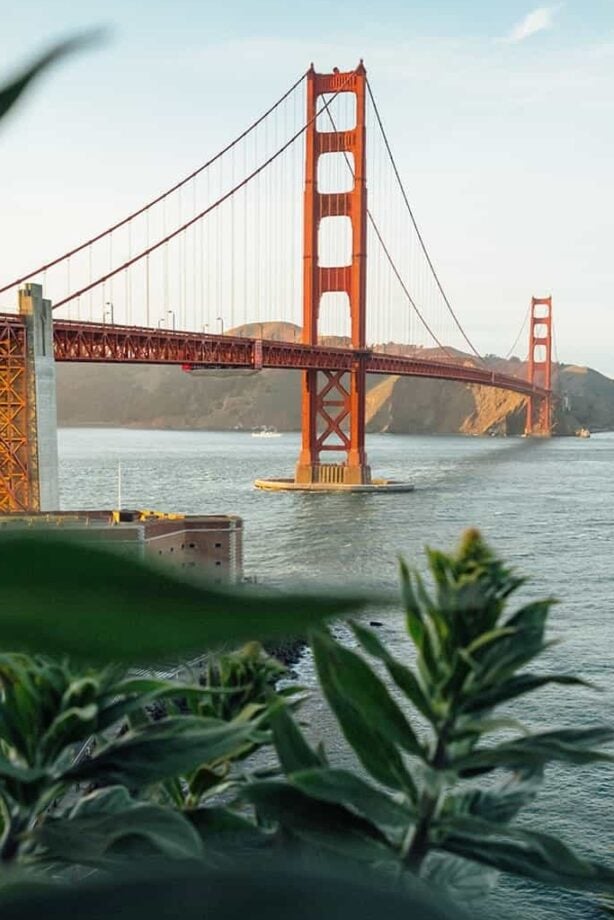Asia · Attractions · Going Out · Japan
5 must-sees when in Kyoto
With a couple of thousand or so temples and shrines, Kyotos reputation as a temple town is solid. Every trip should save room to see a few, but theres no need to over do it. Kyoto has more than enough non-temple must-see sights to keep you busy and maybe even inspire you to make a return trip.
Fushimi Inari-taisha Shrine
Dedicated to the god of rice and sake, the Fushimi Inari-taisha Shrine is one of the most popular shrines in Japan. It attracts two and a half million visitors a year, so you wont be alone but you will be impressed as you make your way through the more than 5000 almost glowing orange torii gates that climb through the hills above the Shrine. You could easily spend a day hiking and wandering here. Why orange? The color is believed to ward off evil spirits.
 Kodaiji Temple
The neighborhood surrounding Kodaiji Temple is almost as much fun to explore as the temple grounds themselves. Along with a variety of temples nearby, there are many restaurants and shops, so theres typically plenty of movement. Though the actual Kodaiji Temple buildings are impressive, I think the gardens are the true show stoppers here. The pond has a way of perfectly reflecting trees around it. There are weeping cherry trees in the spring and blazing maple trees in the fall. The bamboo grove teases you for what waits at the Sagano Bamboo Forest.
Kodaiji Temple
The neighborhood surrounding Kodaiji Temple is almost as much fun to explore as the temple grounds themselves. Along with a variety of temples nearby, there are many restaurants and shops, so theres typically plenty of movement. Though the actual Kodaiji Temple buildings are impressive, I think the gardens are the true show stoppers here. The pond has a way of perfectly reflecting trees around it. There are weeping cherry trees in the spring and blazing maple trees in the fall. The bamboo grove teases you for what waits at the Sagano Bamboo Forest.
 For a short stretch every spring, summer and autumn, Kodaiji opens in the evening. The light up displays are worth planning your time around. While wandering through the illuminated bamboo grove I was struck by my first glimpse of the neighboring 80-foot Ryozen Kannon. The sun had just set, and it was already closed for the day, but the view sold me on making a trip back.
Ryozen Kannon
Skip breakfast, or just get up early enough to take in some caffeine and be at the Ryozen Kannon when it opens. (Opening times can vary, so check the times when you are in town, but Ryozen Kannon tends to open earlier than other nearby temples.) I was waiting when the entrance window opened and had the place all to myself for a good hour. They have an English pamphlet, so be sure to get one when you enter.
For a short stretch every spring, summer and autumn, Kodaiji opens in the evening. The light up displays are worth planning your time around. While wandering through the illuminated bamboo grove I was struck by my first glimpse of the neighboring 80-foot Ryozen Kannon. The sun had just set, and it was already closed for the day, but the view sold me on making a trip back.
Ryozen Kannon
Skip breakfast, or just get up early enough to take in some caffeine and be at the Ryozen Kannon when it opens. (Opening times can vary, so check the times when you are in town, but Ryozen Kannon tends to open earlier than other nearby temples.) I was waiting when the entrance window opened and had the place all to myself for a good hour. They have an English pamphlet, so be sure to get one when you enter.
 The grand Buddha is obvious, but spend time wandering in and out of the numerous buildings. One houses a library of drawers that catalogs the names of the victims who died in World War II. There are the Buddhas massive footprints, (Japans largest) and the Wishing Precious Stone, a large, golden ball located between the main temple and the reflecting pond. Its said if you circle around it three times while touching it with you right hand, your wish will be granted.
Sagano Bamboo Garden
Venture to the outskirts of Kyoto, to the Arashiyama District to explore the Sagano Bamboo Forest. You may have seen pictures, but they really dont do it justice. One main walkway takes you through the packed grove. Towering bamboo stalks, crowd and collide with each other, blocking out sunshine and creating a sound that is distinctly its own. Its a popular stop on many Kyoto itinerarys, so you wont be alone, but its worth seeing even if that means enjoying it in the company of many others. The walkway is long enough to create an impact, but short enough to done by a child or the parent who is used to carrying one.
Nishiki Market
If you like to eat, youll like Nishiki Market. And if youre willing to try new things, youll love it. Its dominated by locals, but visitors are common and welcome here. The market stretches for a number of blocks. The walkway is narrow, but covered so dont let bad weather stop you from making a trip. From fish markets, to fruits and vegetables expect foods and aromas you may have never come across before. Theres also a nice selection of traditional and not so traditional prepared food. Along with food, there are a number of stores that sell handmade goods and souvenir type items. So if you need to pick up a gift, Nishiki Market offers plenty of options. You may have instances where shop owners do not speak English, but it always works out.
The grand Buddha is obvious, but spend time wandering in and out of the numerous buildings. One houses a library of drawers that catalogs the names of the victims who died in World War II. There are the Buddhas massive footprints, (Japans largest) and the Wishing Precious Stone, a large, golden ball located between the main temple and the reflecting pond. Its said if you circle around it three times while touching it with you right hand, your wish will be granted.
Sagano Bamboo Garden
Venture to the outskirts of Kyoto, to the Arashiyama District to explore the Sagano Bamboo Forest. You may have seen pictures, but they really dont do it justice. One main walkway takes you through the packed grove. Towering bamboo stalks, crowd and collide with each other, blocking out sunshine and creating a sound that is distinctly its own. Its a popular stop on many Kyoto itinerarys, so you wont be alone, but its worth seeing even if that means enjoying it in the company of many others. The walkway is long enough to create an impact, but short enough to done by a child or the parent who is used to carrying one.
Nishiki Market
If you like to eat, youll like Nishiki Market. And if youre willing to try new things, youll love it. Its dominated by locals, but visitors are common and welcome here. The market stretches for a number of blocks. The walkway is narrow, but covered so dont let bad weather stop you from making a trip. From fish markets, to fruits and vegetables expect foods and aromas you may have never come across before. Theres also a nice selection of traditional and not so traditional prepared food. Along with food, there are a number of stores that sell handmade goods and souvenir type items. So if you need to pick up a gift, Nishiki Market offers plenty of options. You may have instances where shop owners do not speak English, but it always works out.

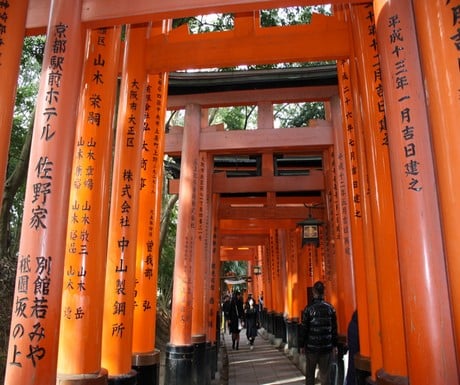 Kodaiji Temple
The neighborhood surrounding Kodaiji Temple is almost as much fun to explore as the temple grounds themselves. Along with a variety of temples nearby, there are many restaurants and shops, so theres typically plenty of movement. Though the actual Kodaiji Temple buildings are impressive, I think the gardens are the true show stoppers here. The pond has a way of perfectly reflecting trees around it. There are weeping cherry trees in the spring and blazing maple trees in the fall. The bamboo grove teases you for what waits at the Sagano Bamboo Forest.
Kodaiji Temple
The neighborhood surrounding Kodaiji Temple is almost as much fun to explore as the temple grounds themselves. Along with a variety of temples nearby, there are many restaurants and shops, so theres typically plenty of movement. Though the actual Kodaiji Temple buildings are impressive, I think the gardens are the true show stoppers here. The pond has a way of perfectly reflecting trees around it. There are weeping cherry trees in the spring and blazing maple trees in the fall. The bamboo grove teases you for what waits at the Sagano Bamboo Forest.
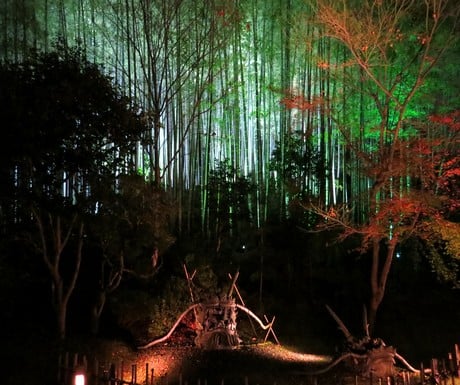 For a short stretch every spring, summer and autumn, Kodaiji opens in the evening. The light up displays are worth planning your time around. While wandering through the illuminated bamboo grove I was struck by my first glimpse of the neighboring 80-foot Ryozen Kannon. The sun had just set, and it was already closed for the day, but the view sold me on making a trip back.
Ryozen Kannon
Skip breakfast, or just get up early enough to take in some caffeine and be at the Ryozen Kannon when it opens. (Opening times can vary, so check the times when you are in town, but Ryozen Kannon tends to open earlier than other nearby temples.) I was waiting when the entrance window opened and had the place all to myself for a good hour. They have an English pamphlet, so be sure to get one when you enter.
For a short stretch every spring, summer and autumn, Kodaiji opens in the evening. The light up displays are worth planning your time around. While wandering through the illuminated bamboo grove I was struck by my first glimpse of the neighboring 80-foot Ryozen Kannon. The sun had just set, and it was already closed for the day, but the view sold me on making a trip back.
Ryozen Kannon
Skip breakfast, or just get up early enough to take in some caffeine and be at the Ryozen Kannon when it opens. (Opening times can vary, so check the times when you are in town, but Ryozen Kannon tends to open earlier than other nearby temples.) I was waiting when the entrance window opened and had the place all to myself for a good hour. They have an English pamphlet, so be sure to get one when you enter.
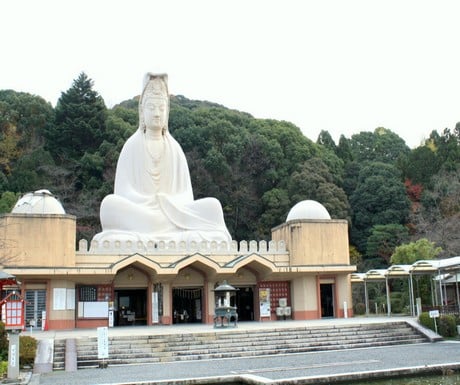 The grand Buddha is obvious, but spend time wandering in and out of the numerous buildings. One houses a library of drawers that catalogs the names of the victims who died in World War II. There are the Buddhas massive footprints, (Japans largest) and the Wishing Precious Stone, a large, golden ball located between the main temple and the reflecting pond. Its said if you circle around it three times while touching it with you right hand, your wish will be granted.
Sagano Bamboo Garden
Venture to the outskirts of Kyoto, to the Arashiyama District to explore the Sagano Bamboo Forest. You may have seen pictures, but they really dont do it justice. One main walkway takes you through the packed grove. Towering bamboo stalks, crowd and collide with each other, blocking out sunshine and creating a sound that is distinctly its own. Its a popular stop on many Kyoto itinerarys, so you wont be alone, but its worth seeing even if that means enjoying it in the company of many others. The walkway is long enough to create an impact, but short enough to done by a child or the parent who is used to carrying one.
Nishiki Market
If you like to eat, youll like Nishiki Market. And if youre willing to try new things, youll love it. Its dominated by locals, but visitors are common and welcome here. The market stretches for a number of blocks. The walkway is narrow, but covered so dont let bad weather stop you from making a trip. From fish markets, to fruits and vegetables expect foods and aromas you may have never come across before. Theres also a nice selection of traditional and not so traditional prepared food. Along with food, there are a number of stores that sell handmade goods and souvenir type items. So if you need to pick up a gift, Nishiki Market offers plenty of options. You may have instances where shop owners do not speak English, but it always works out.
The grand Buddha is obvious, but spend time wandering in and out of the numerous buildings. One houses a library of drawers that catalogs the names of the victims who died in World War II. There are the Buddhas massive footprints, (Japans largest) and the Wishing Precious Stone, a large, golden ball located between the main temple and the reflecting pond. Its said if you circle around it three times while touching it with you right hand, your wish will be granted.
Sagano Bamboo Garden
Venture to the outskirts of Kyoto, to the Arashiyama District to explore the Sagano Bamboo Forest. You may have seen pictures, but they really dont do it justice. One main walkway takes you through the packed grove. Towering bamboo stalks, crowd and collide with each other, blocking out sunshine and creating a sound that is distinctly its own. Its a popular stop on many Kyoto itinerarys, so you wont be alone, but its worth seeing even if that means enjoying it in the company of many others. The walkway is long enough to create an impact, but short enough to done by a child or the parent who is used to carrying one.
Nishiki Market
If you like to eat, youll like Nishiki Market. And if youre willing to try new things, youll love it. Its dominated by locals, but visitors are common and welcome here. The market stretches for a number of blocks. The walkway is narrow, but covered so dont let bad weather stop you from making a trip. From fish markets, to fruits and vegetables expect foods and aromas you may have never come across before. Theres also a nice selection of traditional and not so traditional prepared food. Along with food, there are a number of stores that sell handmade goods and souvenir type items. So if you need to pick up a gift, Nishiki Market offers plenty of options. You may have instances where shop owners do not speak English, but it always works out.
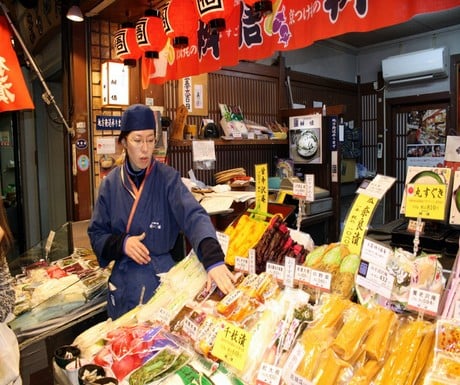
Did you enjoy this article?
Receive similar content direct to your inbox.

